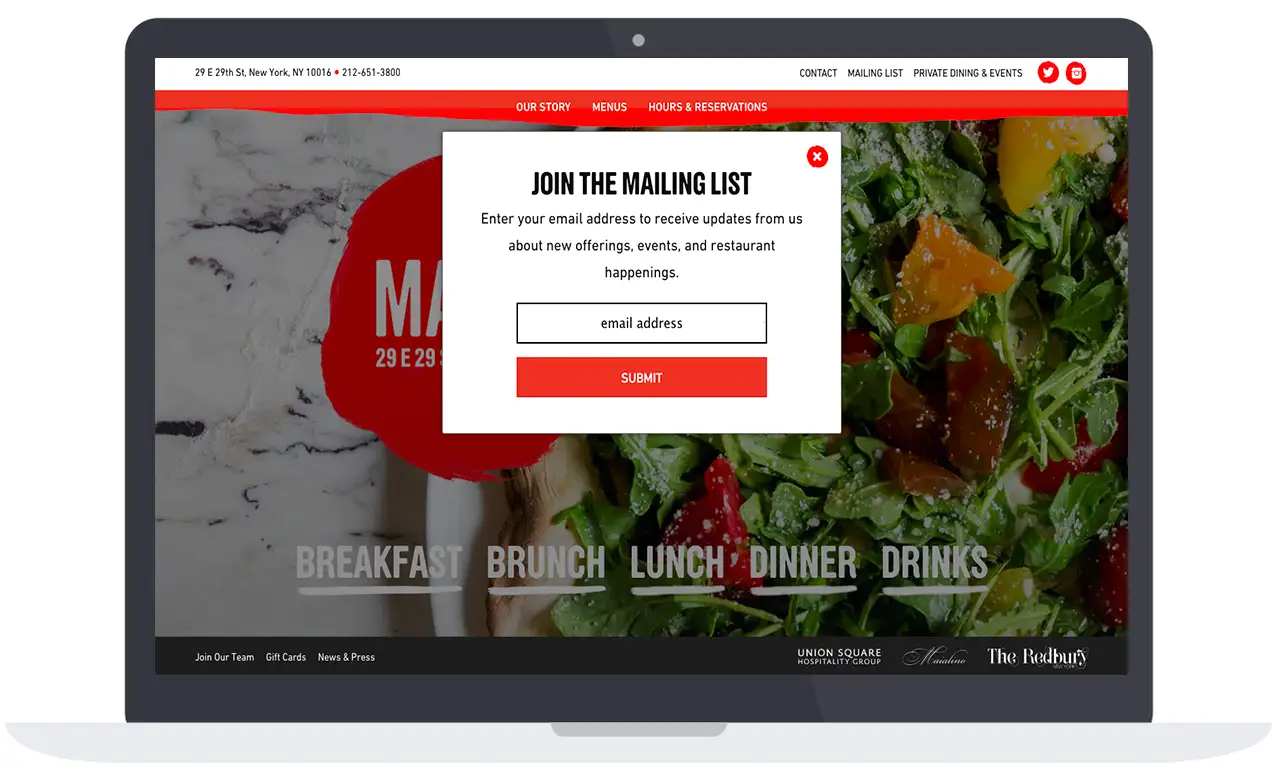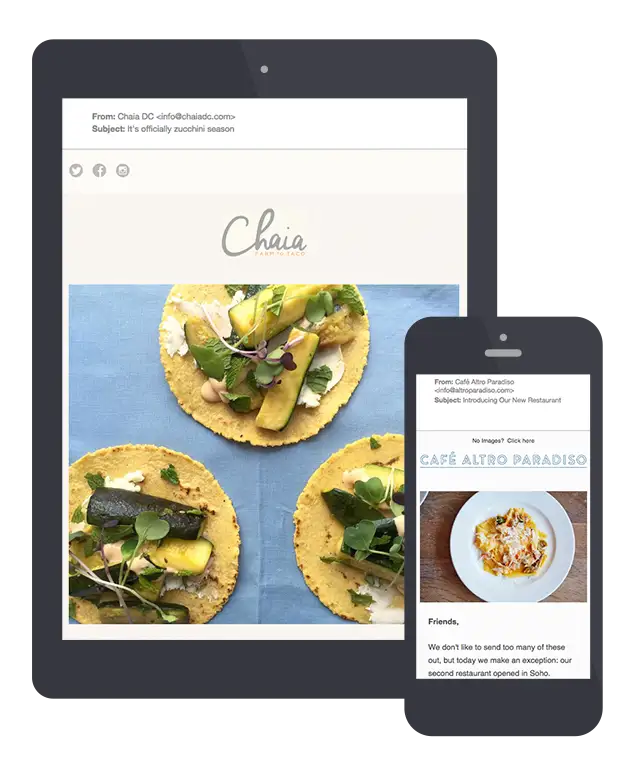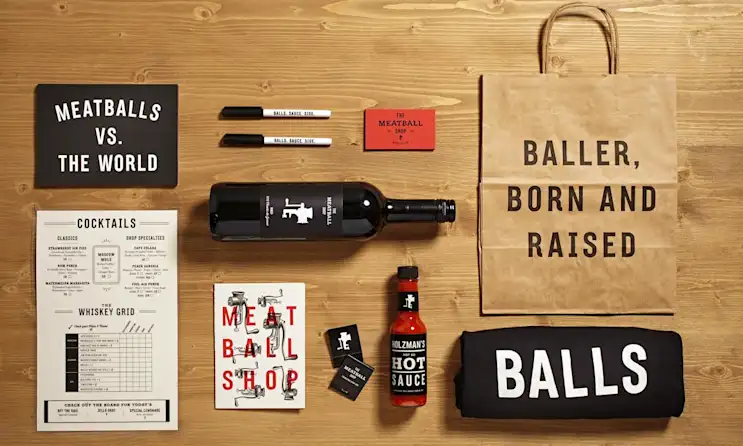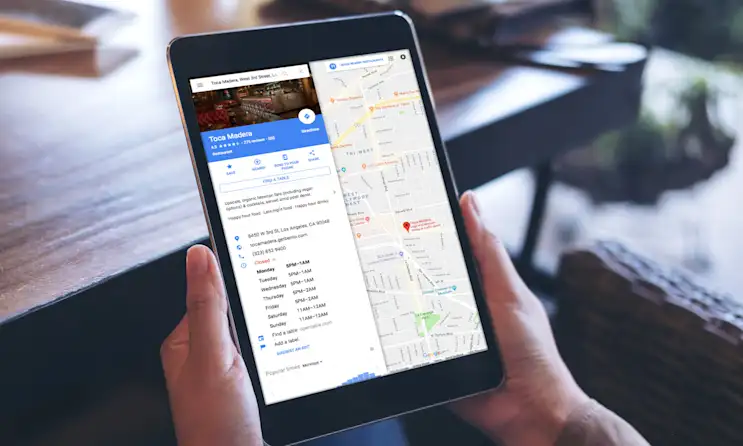Marketing
How Email Can Help Get More Guests into your Restaurant
July 29, 2016
How using email lists can get your restaurant more customers
Think about how much time you spend in front of your inbox every day. If you're like many of us, you’re plugged into your email round-the-clock, whether you're in front of your desktop or on a mobile device. So why aren’t you using email to reach a highly targeted audience of current and new restaurant guests?
Email is one of the most powerful tools in a restaurant’s marketing arsenal. It's the fastest, easiest, and most inexpensive way to reach people who actively want to hear from you. And all you have to do is give people a place to sign up for an email list, which you can do directly on your website.
We occasionally get feedback from restaurants, especially if they're brand new, that they're not ready to start sending emails out just yet. That's totally fine, but we always advocate collecting emails as early as possible, so that when you do have something to say, you have a built-in audience ready to listen.

What to Say
Now that you have your email list set up and ready to go, the next question is how you're going to use it to communicate. To answer that, think about who your guest is and how you can best serve them—just like you do in the dining room or at the bar. Here are some of the highest performing email newsletters from our data:
Opening announcements for new restaurants
Menu items: Specific dishes, new additions, seasonal specials and more
Special offers: Ticketed dinners, special events, happy hours and more.
E-Commerce: Promote gift cards, merchandise, and more
Press: Echo recent positive reviews, write-ups and more
Private dining and/or catering offerings: Particularly useful during busy seasons like the winter holidays, graduation, etc.
Seasonal promos: Take advantage of holidays like Mother’s Day, St. Parick’s Day, and more by offering deals and special dishes
Whatever you choose to put in your email, be sure that it includes a link—to your homepage, your social media channels, your menu, to tickets for special events, etc.—with a strong call to action to drive readers.

In addition, much in the same way that your homepage should always display essential information front and center, your emails should always have some basic information included and/or linked to:
Logistical information (location, hours, phone number)
Social media: Cross-promote your social media channels
Reservations
Online ordering (if available)
Finally, the content in your emails should match the look, tone, and feel of your restaurant as a whole. Many email service providers have templates that make it easy to create emails with your logo and branding, so it’s simple to format text and images in your style. Craft a headline that compels people to open your email—our data shows that email offers with the words "now open," "free" or "15% off" in the subject lines get higher opening rates.
When and Where to Say It
This decision ultimately depends on your restaurant, your bandwidth, and your audience, but we’ve found that sending emails once a month is a good start. You don't want to clog your customer's inbox, but you don't want them to forget about you, either.
Many email services offer timers so you can schedule emails ahead of time, which makes the task easy for whoever is responsible for sending emails (often a general manager, marketing director, and/or social media coordinator).
It’s also important to create emails that are mobile responsive on mobile devices.
Expanding Your List
Getting your email list up and running is a great start. To get as many people signed up and reading as possible, cross-promote your email signup everywhere, including:
Homepage (drive even more signups by making it a part of your “anchor” info)
Social media accounts
On catering or private event forms
Business cards
Sign-up sheets at events
Email signatures
Restaurant receipts
In addition, if you offer online ordering or use an online reservation system, you may be able to collect and use data, including email addresses, from those customers (just check the rules with your provider first).
Recommended

Websites
Restaurant Web Design Essentials
July 5, 2016
How to make a restaurant website that gets you more business

Marketing
Secrets Of Restaurant Branding
September 20, 2016
How to make a lasting restaurant brand with the pros at LMNOP Creative.

Marketing
How To Use Google My Business for Your Restaurant
August 3, 2018
How to manage and improve your restaurant’s presence on Google’s platforms

